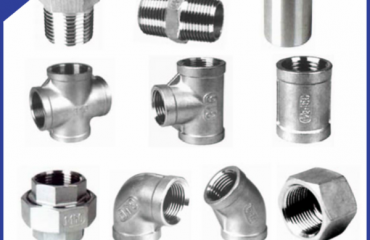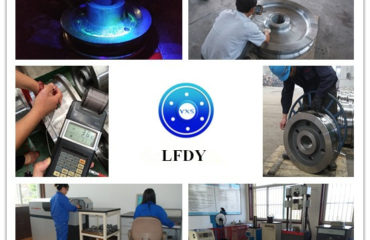
In the production of large Stainless Steel flanges, there are many factors that affect the performance of large flanges. Here are some common factors, First, annealing temperature (the annealing temperature is the temperature parameter when the primer and template are combined. When 50% of the primers and complementary sequences are double stranded DNA molecules, it is an important factor affecting the specificity of PCR. In an ideal state, the annealing temperature is low enough to ensure the effective annealing of the primer and the target sequence, and high enough to reduce the non-specific binding. The reasonable annealing temperature is from 55 ℃ to 70 ℃. The annealing temperature is generally set to be higher than The TM of primer shall be lower than 5 ℃. Whether the annealing temperature reaches the required temperature. Large flanges are generally treated by solution heat treatment, that is, the so-called “annealing”, with a temperature range of 1040~1120 ℃ (Japanese standard). You can also observe through the observation hole of the annealing furnace. The large flange pipe fittings in the annealing area should be incandescent, but there is no softening and sagging.
The second is the pressure of protective gas. In order to prevent micro leakage, the protective gas in the furnace should maintain a certain positive pressure. If it is hydrogen protective gas, it is generally required to be more than 20kbar. Annealing atmosphere: generally, pure hydrogen is used as the annealing atmosphere. The purity of the atmosphere is more than 99.99%. If the other part of the atmosphere is inert gas, the purity can be lower, but it must not contain too much oxygen and water vapor.
The second is the tightness of the furnace body (the shell is welded with steel plate and profile steel, and the trolley is welded with profile steel and steel plate. The trolley reduces the loss of heat radiation and convection through soft contact with the furnace lining and sand sealing mechanism, so as to effectively ensure the tightness of the furnace body), The bright annealing furnace should be closed and isolated from the outside air; If hydrogen is used as the protective gas, only one exhaust port is open (used to ignite the discharged hydrogen). The inspection method can use soapy water to wipe the joints of the annealing furnace to see if there is air leakage; The places where gas is easy to escape are the places where the annealing furnace enters and exits the tubes. The sealing rings in this place are particularly easy to wear, so they should be checked and replaced frequently.
 Language
Language Espanol
Espanol English
English Italian
Italian عربى
عربى
 Skype: chinamaker99
Skype: chinamaker99  Tel: 86-316-5120812
Tel: 86-316-5120812 Email:
Email:  Whatsapp:
Whatsapp: 
